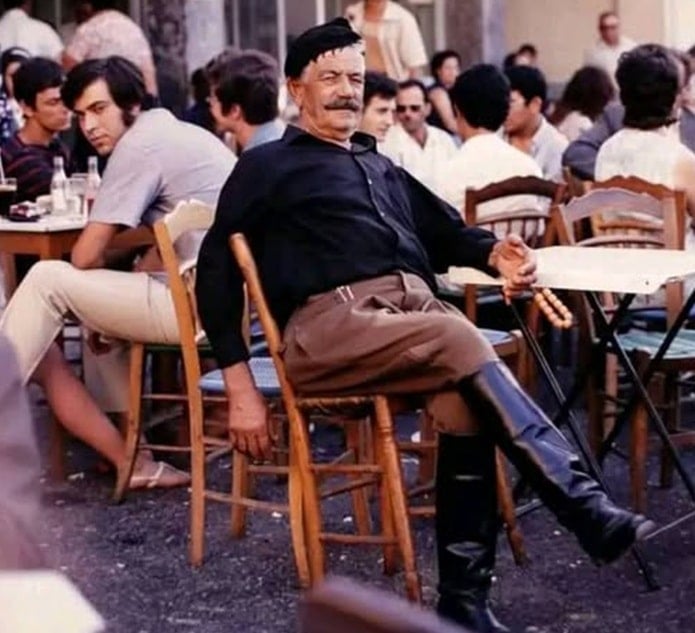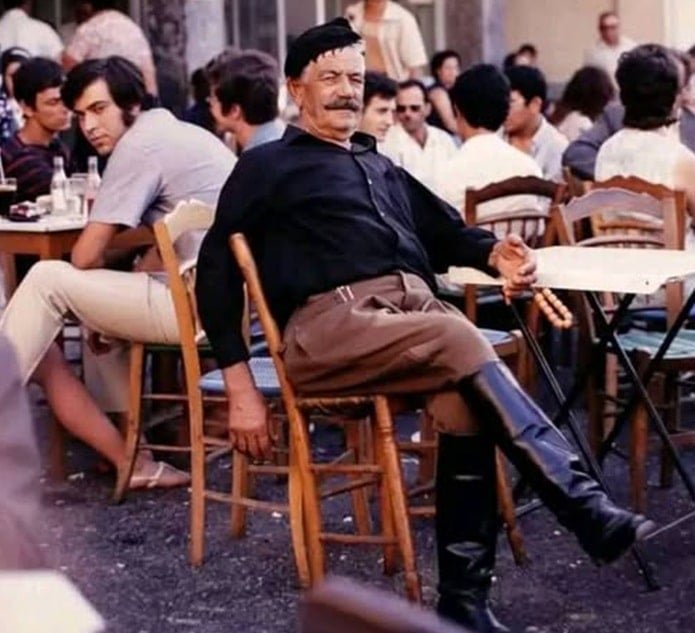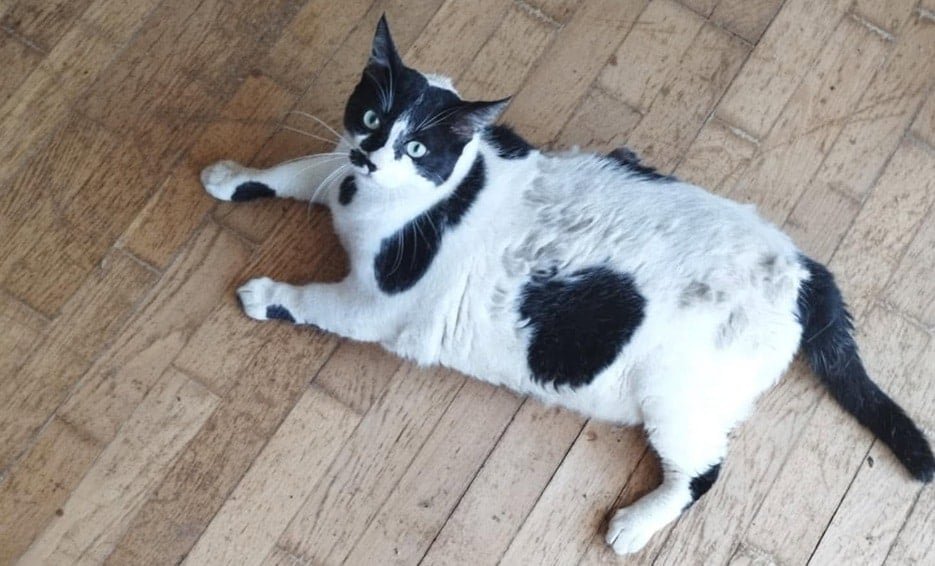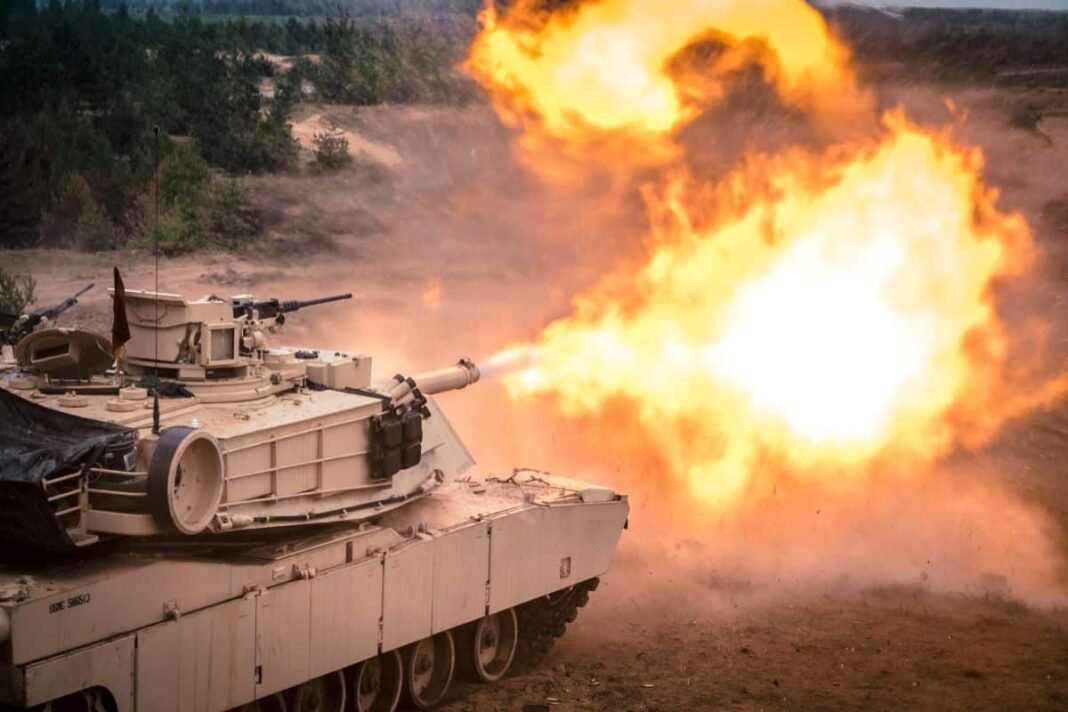
This photo, snapped in the mid-1970s outside a café on Crete, is the epitome of Cretan pride. It captures more than just a man; it captures a moment when tradition stood strong amidst a changing world.
Seated at the forefront, a figure carved from the very essence of Crete. His posture was relaxed but firm, his gaze steady, as if he carried the weight of the island’s history. In his hand, a string of worry beads, a komboloi, danced with a hypnotic rhythm, each click a punctuation mark in his thoughts.
The pride of attire in Crete
But it was his attire that truly spoke volumes, a visible declaration of identity worn with an unmistakable air of dignity and pride.
His head was crowned by a dark, flat cap, often referred to as a skapoulare or simply a traditional Cretan cap. This wasn’t merely headwear; it was a subtle nod to a history of defiance and independence, a constant companion to the islander, shading him from the relentless Cretan sun and symbolizing a quiet strength.
His shirt, a simple, dark garment, spoke of practicality and resilience. It was tucked neatly into the most striking element of his ensemble: the vraka.
These wide, baggy breeches, typically dark blue or black, tapered sharply at the ankles and were once the ubiquitous trousers for Cretan men. They were designed for freedom of movement, ideal for navigating rugged mountain terrain, riding horses, or working the land.

Below the vraka, his legs disappeared into tall, gleaming black leather boots, the stivania. These handmade, often custom-fitted, boots were a testament to durability and a symbol of status. Essential for protection in the unforgiving landscape, they also conveyed a certain swagger, completing the distinct Cretan silhouette.
The man’s stivania looked well-worn, its leather softened by countless hours spent walking, working, and perhaps dancing, yet it retained a polished gleam that bespoke care and respect.
Clothes are an extension of the soul
In the bustling kafenio, surrounded by men in more conventional Western attire, the proud Cretan stood out not as an anomaly, but as a living monument.
It wasn’t a costume donned for tourists; it was an extension of his soul, a quiet affirmation of who he was and where he came from. With each click of his komboloi, he wasn’t just passing time; he was breathing life into a tradition, a testament to an enduring spirit that was as integral to Crete as its ancient olive groves and its fiercely independent people.
While the full traditional attire like the vraka and stivania is not typically worn as everyday clothing by most Cretan men today, it is still proudly worn for special occasions.
You’ll see it at festivals and celebrations, especially during local village feasts, religious holidays, and cultural events. Some men, particularly in more traditional families or rural areas, might wear parts of the attire for significant family events, such as weddings and baptisms.


